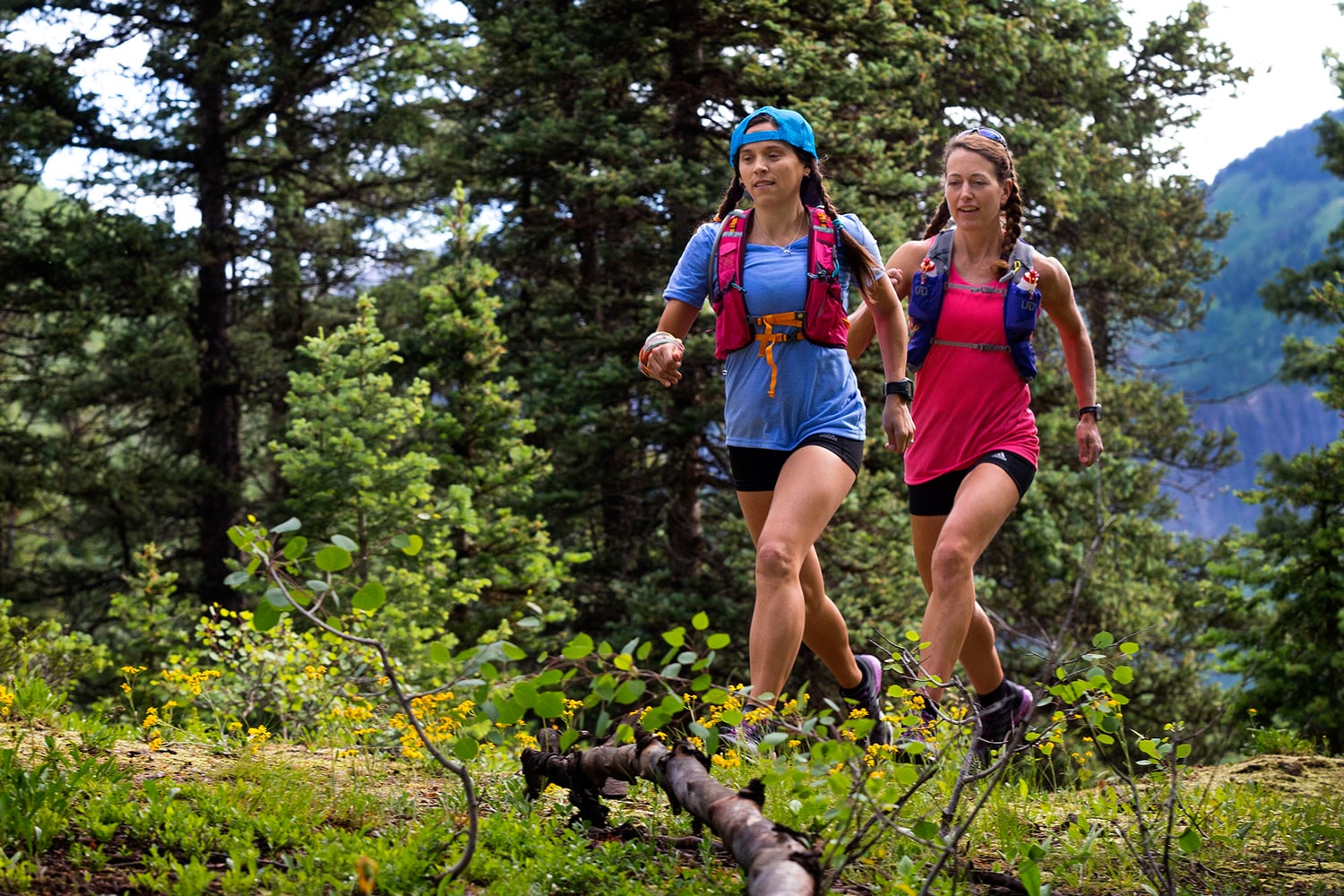Ask any woman trail runner what she loves about her sport, and she’s likely to talk your ear off expounding on its many gifts—the sense of freedom, the experience of exploring one’s limits and growing stronger, the beautiful scenery, the joy of endorphins, the friends and community she’s met through trail running.
The list goes on and on.
And yet, at least at first, many people have reservations about getting into trail running. Susan Farago and Richelle Criswell, who lead a four-week, beginner-friendly Women on the Trails program in Austin, Texas, say that they get the same four questions over and over again: “How will I know where I am going? Is it safe? What if I fall? What about snakes?”
These fears are valid, no doubt. But overcoming them can also be a great source of empowerment and, in doing so, will invite you into the welcoming arms of one of the greatest outdoor pursuits on this planet. (OK, so maybe I’m biased. But trust me when I say I genuinely believe any person’s life can be improved by cultivating a trail-running habit.)

Photo by Steve Hertzfeld.
Find your tribe.
Not every city is as fortunate as Austin is to have something like Farago and Criswell’s Women on the Trails program—but do a little research in your hometown to see if any beginner-friendly trail-running groups exist. Most trail runners will tell you you’ll be hard-pressed to find a more welcoming bunch of people.
If no groups exist, gather a few like-minded friends—or even just a reliable buddy or two—and start your own informal adventure group.
Participating in a local trail race is also a great way to meet other runners. It’s the perfect opportunity to experience trail running in a fully supported environment, complete with directional signs to ensure you won’t get lost, aid stations to ensure you won’t run out of food or water, and friendly company along the way to ensure you won’t be alone.
Understand risks (or lack thereof!) and plan accordingly.
Compared to many of the activities we may engage in regularly—driving a car, say—trail running is a fairly low-risk activity.
Of course, it is also not without any risks. Depending on your environs, consider the possibilities of wildlife encounters, twisting an ankle in the backcountry, running out of water, getting lost (and even, depending on how lost, needing to survive a night out in the wilderness), getting caught above tree line in a thunderstorm—and plan accordingly.
Running with others is a great primary defense against many of the above risks, but don’t rule out running solo, too. Just consider several other precautions: Stay aware of your surroundings by leaving headphones at home. Carry your cellphone or a GPS transponder if you like, but remember that in the backcountry, reception may be spotty and batteries often die more rapidly. Before you leave home, always tell at least one person your planned itinerary (then stick to it!) and intended return time.
For longer runs, carry a small pack with food and water, as well as supplies such as a map, mini first-aid kit, headlamp and emergency blanket.
Empower yourself with knowledge.
Running in bear country? Take time to read up on how to react in case of an encounter.
Sticking to more urban trails? Consider taking a self-defense course.
Venturing farther into the backcountry? Take a class in good old map-and-compass navigation.
But what if I need to …
Wondering how to pee in the woods? Or deal with your period during long trail runs?
Climber, alpinist and trail-runner Shelby Carpenter did a great job answering these questions in her two-part Girl Talk series—but, in short, a few backcountry-friendly products and a little practice getting comfortable squatting in the woods can go a long way! Don’t let these concerns prevent you from hitting the trail.
Worried about falling? Practice makes perfect.
When you’re first learning to run trails, stick to flat gravel trails or fire roads. Urban parks or the soft dirt on either side of rail-to-trail bike paths are also good options for rookies. Once you’re comfortable on these, ease yourself gradually onto more technical trails. Channel your inner gazelle, but be sure to “brake” for slippery hazards like wet or mossy rocks, muddy patches and slick tree roots.
On downhills in particular, if you find yourself catching your toe frequently on roots or rocks, the best thing you can do is “push” your gaze further down the trail by a few feet. In other words, avoid the temptation to look directly at your feet while you run. Also, practice picking up your feet a little higher than you might do while road running to ensure you fully clear obstacles in your path.
Feature photo by Kevin Swinicki.
Above all, relax and have fun. Happy trails!
